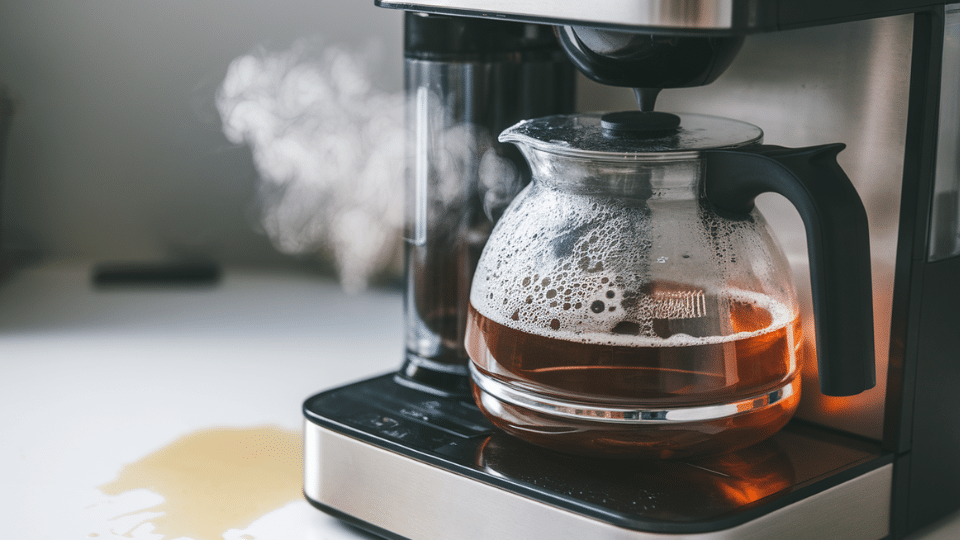Your coffee maker requires regular cleaning to brew great-tasting coffee, but the harsh smell and lingering taste of vinegar make the process unpleasant.
Many coffee lovers avoid cleaning their machines because they dread the pungent vinegar odor that can take days to dissipate.
You can keep your coffee maker spotless using gentle, natural alternatives that work just as well as vinegar without the drawbacks. These household ingredients clean effectively while leaving your machine fresh and ready for a perfect cup of coffee.
This guide reveals proven vinegar-free cleaning methods using baking soda, lemon juice, hydrogen peroxide, dish soap, and citric acid.
You’ll learn proper cleaning schedules, warning signs to watch for, and simple prevention tips that keep your coffee maker cleaner longer. Say goodbye to vinegar and hello to better-tasting coffee.
Why Avoid Vinegar?
While vinegar is widely recommended for cleaning coffee makers, it may not be the perfect solution for everyone.
Many coffee enthusiasts are switching to gentler alternatives that work just as well without the downsides. The truth is, you don’t need harsh-smelling vinegar to get your coffee maker sparkling clean.
Vinegar cleaning often creates more problems than it solves. The strong smell can linger for days, no matter how many times you rinse.
Your first cup of coffee after cleaning might taste sour or bitter. Some people can’t even be in the same room during the cleaning process due to the overwhelming fumes.
Common Concerns with Vinegar
- A strong smell that won’t go away – Vinegar leaves a sharp odor that can take multiple rinse cycles to remove completely. The smell can stick around for several brewing cycles, affecting your coffee’s aroma and taste.
- Bitter aftertaste in your coffee – Even after thorough cleaning, vinegar residue can affect the flavor of your morning brew. Many users report a sour or metallic taste that ruins their coffee experience for days.
- Allergic reactions and sensitivities – Some individuals may experience headaches, respiratory issues, or skin irritation due to vinegar fumes. Individuals with asthma or chemical sensitivities often find vinegar cleaning particularly challenging.
- Potential damage to internal parts – The high acidity can corrode rubber seals, gaskets, and metal components in certain coffee maker models. Over time, this can lead to leaks or mechanical failures.
- Unpleasant cleaning experience – The strong fumes make the cleaning process less comfortable. Many people avoid cleaning their coffee makers regularly because they dislike the smell of vinegar.
How to Clean a Coffee Maker without Vinegar?
Ready to ditch the vinegar and try something better? These five natural alternatives will leave your coffee maker spotless without the harsh smell or lingering taste.
1. Baking Soda
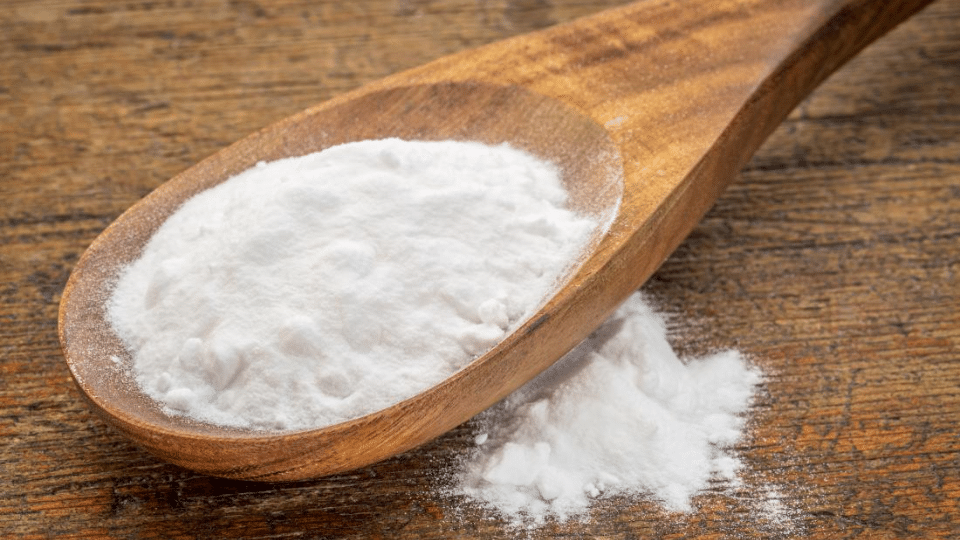
Baking soda is a gentle abrasive that breaks down coffee oils and mineral deposits without scratching surfaces. It neutralizes odors instead of adding new ones, making it perfect for coffee makers. This everyday kitchen staple works by lifting stains and naturally dissolving buildup.
Step-by-Step Instructions:
- Mix 1/4 cup baking soda with 1 cup warm water
- Pour the solution into your coffee maker’s water reservoir
- Run a brewing cycle without coffee grounds
- Let the solution sit in the carafe for 15 minutes
- Run 2-3 cycles with plain water to rinse thoroughly
- Wipe down all external surfaces with a damp cloth
Pro Tip: For stubborn stains, make a paste with baking soda and water. Apply it to problem areas and let it sit for 10 minutes before scrubbing gently.
2. Lemon Juice
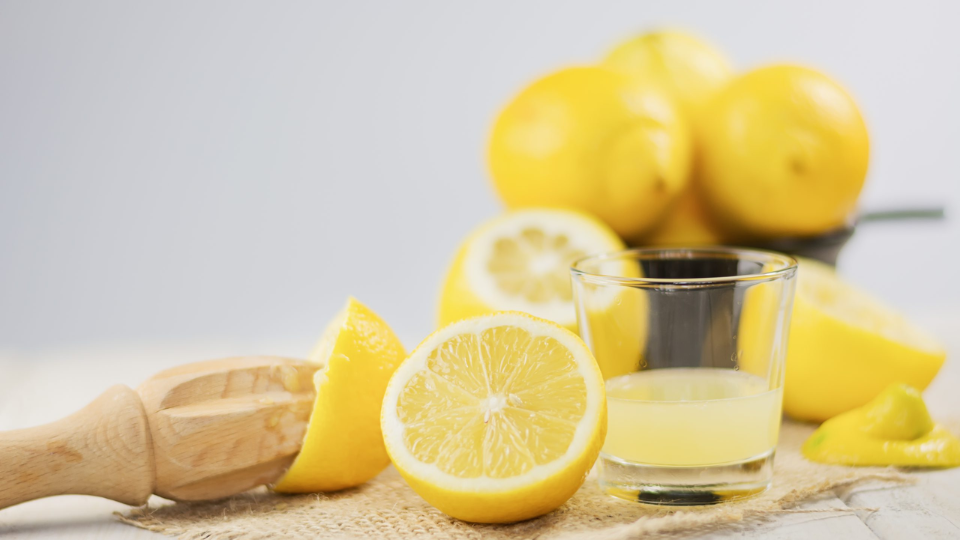
Fresh lemon juice provides natural acidity that cuts through mineral buildup and coffee residue. Unlike vinegar, it leaves a fresh, clean scent that won’t affect your coffee’s taste. The citric acid in lemons is powerful enough to descale but gentle enough for regular use.
Instructions for Use:
- Mix 1/2 cup fresh lemon juice with 1/2 cup water
- Fill your coffee maker’s reservoir with the lemon solution
- Run a complete brew cycle
- Allow the mixture to sit in the carafe for 30 minutes
- Run 2-3 cycles with fresh water to remove any lemon residue
- Clean removable parts with the remaining lemon solution
Bonus: Save money by using bottled lemon juice if fresh lemons aren’t available. Use the same ratio for effective cleaning.
3. Hydrogen Peroxide
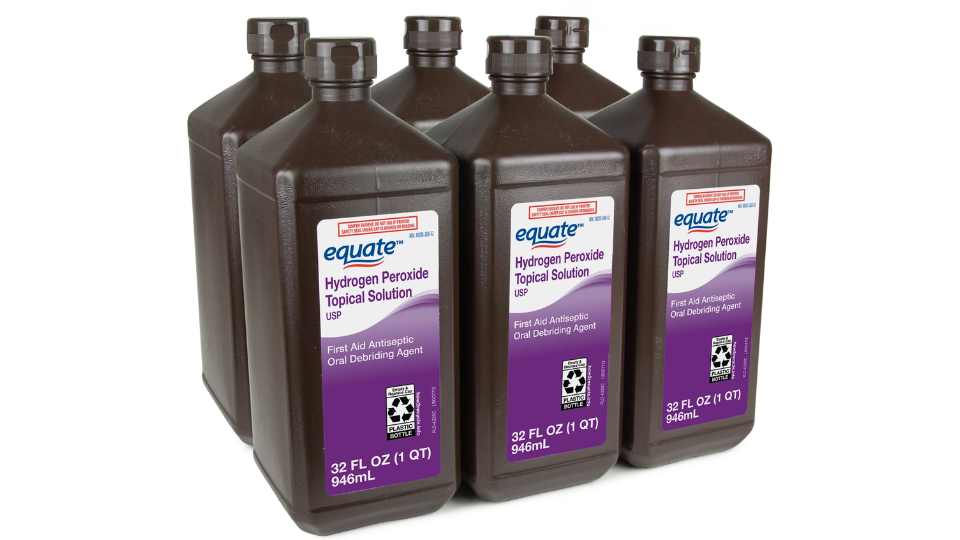
When diluted properly, hydrogen peroxide becomes a safe and effective sanitizer for your coffee maker. It kills bacteria and mold while breaking down organic buildup. This method is beneficial if your coffee maker has been sitting unused for a while.
How to Use It Properly:
- Create a 3% hydrogen peroxide solution (1 part peroxide to 2 parts water)
- Fill the water reservoir with the diluted solution
- Run one brew cycle
- Let the solution sit for 20 minutes
- Run 3-4 cycles with plain water to ensure complete removal
- Clean all removable parts separately with the same solution
Safety Precautions:
- Always dilute hydrogen peroxide before use
- Never mix with other cleaning agents
- Ensure thorough rinsing before brewing coffee
- Store peroxide in a cool, dark place
4. Dish Soap and Warm Water
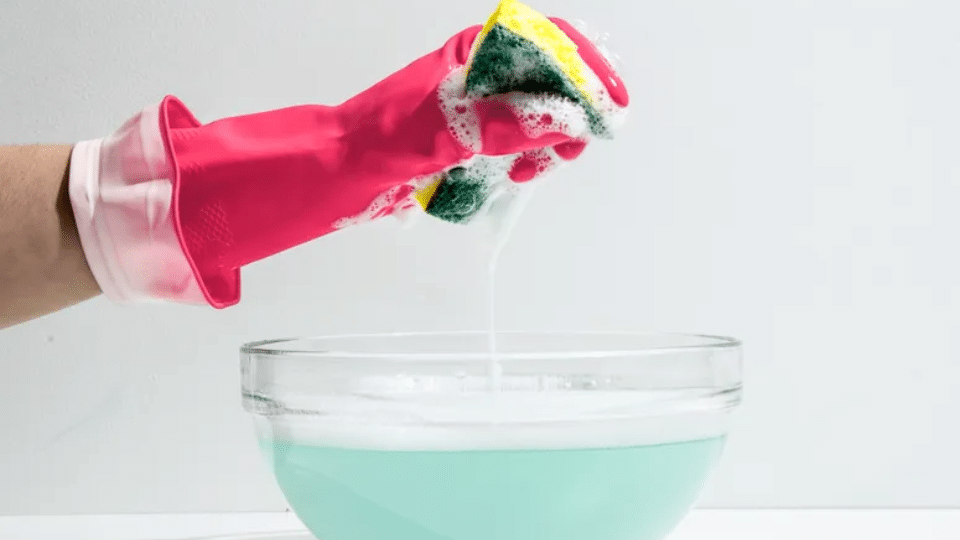
Simple dish soap mixed with warm water works wonders for daily maintenance and cleaning removable parts. While it won’t remove mineral deposits like other methods, it’s perfect for removing coffee oils and maintaining hygiene between deep cleanings.
Daily Cleaning Method:
- Remove all detachable parts (carafe, filter basket, lid)
- Wash parts in warm, soapy water
- Use a soft brush to scrub away coffee stains
- Rinse thoroughly and dry completely
- Wipe the heating plate and exterior with a damp cloth
- Clean the water reservoir with soapy water monthly
Important Note: This method handles surface cleaning but won’t descale your machine. Combine it with other methods for complete maintenance.
5. Citric Acid
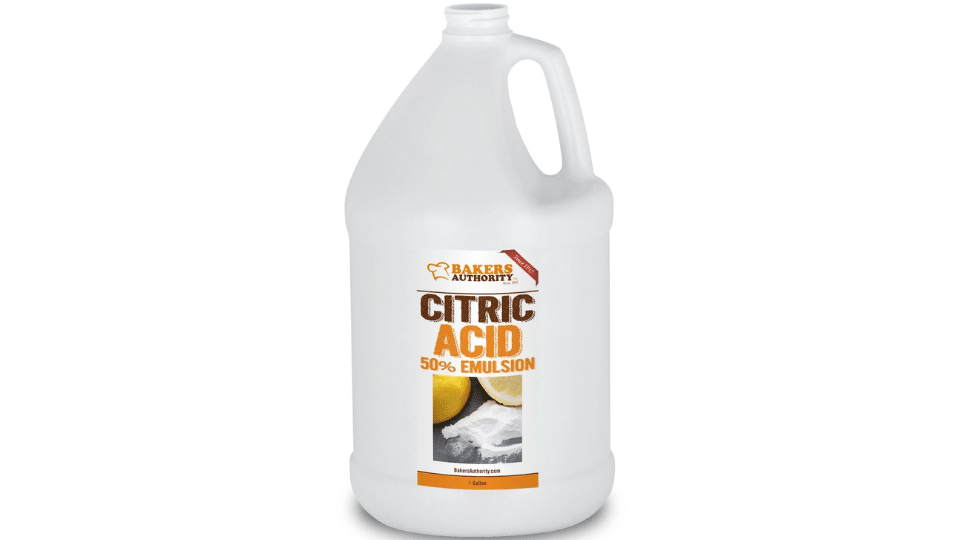
Citric acid is a more effective descaling alternative to vinegar. It effectively removes mineral buildup without leaving any unpleasant smell or taste behind. This food-grade acid is commonly found in many commercial descaling products.
Where to Buy and How to Mix:
- Find citric acid at grocery stores (canning section), health food stores, or online
- Mix 2 tablespoons citric acid powder with 4 cups of water
- Stir until completely dissolved
Descaling Instructions:
- Fill the reservoir with the citric acid solution
- Run a brewing cycle and let it sit for 30 minutes
- Run another cycle to complete the descaling process
- Rinse with 3-4 cycles of plain water
- Taste the water from the final rinse to ensure no residue remains
Storage Tip: Citric acid powder keeps well in a sealed container. One pound will last for dozens of cleaning sessions.
Types of Coffee Maker Cleaning Without Vinegar
| Coffee Maker Type | Cleaning Method | How Often | Notes |
|---|---|---|---|
| Drip Machine | Baking soda or lemon juice rinse | Weekly or Monthly | Clean carafe, filter basket; run rinse cycles after cleaning. |
| Keurig / Pod System | Citric acid solution or hydrogen peroxide flush | Bi-weekly or Monthly | Run the brew cycle without a pod; unclog the needle with a paperclip. |
| Espresso Machine | Citric acid flush; manual wipe of components | Every 10–15 uses | Backflush system: Clean the portafilter and group head with a brush. |
How Often Should You Clean Your Coffee Maker?
Regular coffee maker maintenance ensures your morning brew tastes fresh and extends the life of your machine. Most coffee lovers don’t clean their makers often enough, which leads to bitter coffee and mechanical problems.
Clean your coffee maker daily by rinsing the carafe and filter basket after each use. Wipe the heating plate and leave the lid open to air dry. Weekly, wash all removable parts with dish soap and clean the exterior. Monthly, descale using one of the vinegar alternatives to remove mineral buildup.
Watch for warning signs, such as an odd taste, slow brewing, gurgling noises, white residue, or mold spots. These indicate your coffee maker needs immediate cleaning. Don’t wait for problems – stick to a regular cleaning schedule for better-tasting coffee every day.
Bonus Tips: Keep Your Coffee Maker Cleaner for Longer
These simple habits will reduce the frequency of cleaning and keep your coffee maker in top condition. Small daily actions prevent big problems later.
- Use filtered water – Reduces mineral buildup and extends the time between descaling sessions. Hard water creates more deposits that clog your machine.
- Rinse after each use – A Quick rinse of the carafe and filter basket prevents coffee oils from turning rancid and staining surfaces.
- Store with the lid open – This allows for complete air drying and prevents mold growth in moist, dark spaces inside your machine.
- Replace water daily – Don’t let water sit in the reservoir for days. Stagnant water breeds bacteria and negatively impacts the taste.
- Clean spills immediately – Wipe up coffee drips on the heating plate and exterior before they dry and become more difficult to remove.
- Use paper filters – They catch more oils and particles than permanent filters, keeping internal parts cleaner longer.
- Empty grounds quickly – Remove used coffee grounds within a few hours to prevent mold and unpleasant odors.
- Check rubber seals monthly – Inspect gaskets and seals for coffee residue or mold that can affect performance.
Final Thoughts
Cleaning your coffee maker doesn’t have to involve harsh vinegar that leaves lingering smells and affects the taste of your coffee.
The natural alternatives we covered, baking soda, lemon juice, hydrogen peroxide, dish soap, and citric acid, prove that gentle cleaning methods work just as effectively.
Regular maintenance using these methods ensures every cup tastes fresh and clean. Follow the daily, weekly, and monthly cleaning schedule to prevent problems before they start.
Watch for warning signs, such as slow brewing or unusual tastes, that indicate immediate cleaning needs. Remember the bonus prevention tips – use filtered water, rinse after each use, and store with the lid open to minimize cleaning frequency.
Your coffee maker will last longer and brew better coffee when you treat it right. Try these vinegar-free cleaning methods and taste the difference in your next cup.
Which cleaning alternative will you try first? Share your results in the comments below, and bookmark this guide for your regular coffee maker maintenance routine.
Frequently Asked Questions
Can you Clean a Coffee Maker without Vinegar?
Yes, you can effectively clean your coffee maker using baking soda, lemon juice, citric acid, hydrogen peroxide, or dish soap instead of vinegar.
What Is the Best Home Remedy to Clean a Coffee Maker?
Citric acid is the most effective home remedy, providing powerful descaling without smell or taste residue.
Is Vinegar or Baking Soda Better for Cleaning a Coffee Maker?
Baking soda is a better choice because it cleans effectively without leaving harsh odors or altering the taste of your coffee.
What Is the Best Homemade Descaler?
Mix 2 tablespoons of citric acid powder with 4 cups of water for the most effective homemade descaler.

